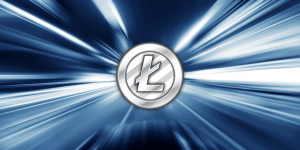Содержание

The index set of this stochastic process is the non-negative numbers, while its state space is three-dimensional Euclidean space. This phrase was used, with reference to Bernoulli, by Ladislaus Bortkiewicz, who in 1917 wrote in German the word Stochastik with a sense meaning random. For the term and a specific mathematical definition, Doob cited another 1934 paper, where the term stochastischer Prozeß was used in German by Aleksandr Khinchin, though the German term had been used earlier in 1931 by Andrey Kolmogorov.

Proposals for special issues in cutting-edge areas are welcome and should be directed to the Editor-in-Chief who will review accordingly. The stochastic oscillator was developed in the late 1950s by George Lane. As designed by Lane, the stochastic oscillator presents the location of the closing price of a stock in relation to the high and low range of the price of a stock over a period of time, typically a 14-day period.
Understanding the Stochastic Oscillator
In this case the theory is Carlson isn’t talking to Cortez, he’s talking to several thousand deranged potential violence perpetrators. The message is “AOC is one of the targets” and the goal is to incite one of them to take action. For example, drag shows, or children at school in liberal suburbs or whatever. It is in this manner that the stochastic terrorist is thought to randomly incite individuals predisposed to acts of violence. Because stochastic terrorists do not target and incite individual perpetrators of terror with their message, the perpetrator may be labeled a lone wolf by law enforcement, while the inciters avoid legal culpability and public scrutiny.

This type of modeling forecasts the probability of various outcomes under different conditions, using random variables. In the context of point processes, the term «state space» can mean the space on which the point process is defined such as the real line, which corresponds to the index set in stochastic process terminology. The term «separable» appears twice here with two different meanings, where the first meaning is from probability and the second from topology and analysis. For a stochastic process to be separable , its index set must be a separable space , in addition to other conditions.
Population Viability Analysis
A stochastic oscillator is used by technical analysts to gauge momentum based on an asset’s price history. Technical traders can add the stochastic oscillator on top of a security’s price chart, which often appears in its own window below the price. There will typically be a horizontal line drawn at the 80 and 20 levels of the index as well as at the mean . When the stochastic line falls below 20 or rises above 80, it produces a trading signal.
A typical non-ergodic process is one where there is one state or a group of states where the process “becomes trapped” and cannot leave these. An example is a population model where the https://forexbitcoin.info/ population can become extinct and then is extinct for future times. This means that, at each observation at a certain time, there is a certain probability to get a certain outcome.
Typical oversold and overbought conditions are noted on the chart, and line crossings confirm these trading signals. Divergences are also important as they can indicate that prices are reaching new highs, but the Stochastics lines are already receding from previous highs, which can be seen as a sign to sell or short. Dynamic momentum index is technical indicator that determines if a security is overbought or oversold and can be used to generate trading signals. Stochastic investment models attempt to forecast the variations of prices, returns on assets , and asset classes—such as bonds and stocks—over time. The Monte Carlo simulation is one example of a stochastic model; it can simulate how a portfolio may perform based on the probability distributions of individual stock returns. Stochastic investment models can be either single-asset or multi-asset models, and may be used for financial planning, to optimize asset-liability-management or asset allocation; they are also used for actuarial work.
His book Stochastic Processes is considered highly influential in the field of probability theory. Markov processes form an important class of stochastic processes and have applications in many areas. For example, they are the basis for a general stochastic simulation method known as Markov chain Monte Carlo, which is used for simulating random objects with specific probability distributions, and has found application in Bayesian a complete guide to the futures market statistics. In the context of mathematical construction of stochastic processes, the term regularity is used when discussing and assuming certain conditions for a stochastic process to resolve possible construction issues. For example, to study stochastic processes with uncountable index sets, it is assumed that the stochastic process adheres to some type of regularity condition such as the sample functions being continuous.
Price Action
This indicates that momentum is increasing and the instrument’s price could move higher. Traders often look to buy after a brief price pullback in which the stochastic indicator has dropped below 50 on the pullback and then moved higher again. A bear trade setup occurs when the stochastic indicator makes a lower low, but the instrument’s price makes a higher low.
The user may want to modify default parameters of these criteria, that are accessible in the “Simulation→Edit→Advanced” panel, to achieve a best-suited tradeoff between accuracy and efficiency of the simulation. Another type of simple process is a Gaussian process, for which all probabilities for certain outcomes and their dependence on previous observations is given by an exponential of a quadratic form of all that kind of values. Such probabilities with exponential quadratic forms are advantageous to handle, and they can therefore also successfully cover processes that are not Markovian. A stochastic treatment of chemical reactions considers primarily the number of various reactants. That may be insufficient, however, also if internal states and positions influence what will happen next.
- Starting in 1928, Maurice Fréchet became interested in Markov chains, eventually resulting in him publishing in 1938 a detailed study on Markov chains.
- Stochastic can be thought of as a random event, whereas probabilistic is derived from probability.
- Of course, you shouldn’t take a trading action based solely on this one signal.
- Furthermore, seemingly random changes in financial markets have motivated the extensive use of stochastic processes in finance.
- The Brownian motion process and the Poisson process are both examples of Markov processes in continuous time, while random walks on the integers and the gambler’s ruin problem are examples of Markov processes in discrete time.
Andrei Kolmogorov developed in a 1931 paper a large part of the early theory of continuous-time Markov processes. Kolmogorov was partly inspired by Louis Bachelier’s 1900 work on fluctuations in the stock market as well as Norbert Wiener’s work on Einstein’s model of Brownian movement. He introduced and studied a particular set of Markov processes known as diffusion processes, where he derived a set of differential equations describing the processes.
Overbought vs Oversold
The term random function is also used to refer to a stochastic or random process, because a stochastic process can also be interpreted as a random element in a function space. The terms stochastic process and random process are used interchangeably, often with no specific mathematical space for the set that indexes the random variables. But often these two terms are used when the random variables are indexed by the integers or an interval of the real line. If the random variables are indexed by the Cartesian plane or some higher-dimensional Euclidean space, then the collection of random variables is usually called a random field instead. The values of a stochastic process are not always numbers and can be vectors or other mathematical objects. In technical analysis, stochastics refer to a group of oscillator indicators that point to buying or selling opportunities based on momentum.
Readings above 50 indicate the instrument is trading within the upper portion of the trading range. Readings below 50 signal that the instrument is trading in the lower portion of the trading range. Spread bets and CFDs are complex instruments and come with a high risk of losing money rapidly due to leverage. 78% of retail investor accounts lose money when spread betting and/or trading CFDs with this provider. You should consider whether you understand how spread bets and CFDs work and whether you can afford to take the high risk of losing your money.
For a model to be stochastic, it must have a random variable where a level of uncertainty exists. Due to the uncertainty present in a stochastic model, the results provide an estimate of the probability of various outcomes. By allowing for random variation in the inputs, stochastic models are used to estimate the probability of various outcomes. This is particularly important if you have indeed acted on a false signal and the price movements you are expecting are not happening.
How Do You Read the Stochastic Oscillator?
The Stochastics indicator is one such tool, often used in conjunction with other indicators to help confirm price behaviour in the forex markets. By comparing the current price to the range over time, the stochastic oscillator reflects the consistency with which the price closes near its recent high or low. A reading of 80 would indicate that the asset is on the verge of being overbought. Divergence between the stochastic oscillator and trending price action is also seen as an important reversal signal. For example, when a bearish trend reaches a new lower low, but the oscillator prints a higher low, it may be an indicator that bears are exhausting their momentum and a bullish reversal is brewing. Stochastic modeling is a form of financial model that is used to help make investment decisions.
Generally, a period of 14 days is used in the above calculation, but this period is often modified by traders to make this indicator more or less sensitive to movements in the price of the underlying asset. Lane, over the course of numerous interviews, said that the stochastic oscillator does not follow price or volume or anything similar. As seen from the chart above, the stochastic oscillator for AAPL moved into the overbought territories between October 21 and 26 in 2022, and more recently, between January 19 and 30 in 2023.
The event creates its own conditions of possibility, rendering it unpredictable if simply for the number of variables involved. Stochastic social science theory can be seen as an elaboration of a kind of ‘third axis’ in which to situate human behavior alongside the traditional ‘nature vs. nurture’ opposition. See Julia Kristeva on her usage of the ‘semiotic’, Luce Irigaray on reverse Heideggerian epistemology, and Pierre Bourdieu on polythetic space for examples of stochastic social science theory. It is also used in finance, due to seemingly random changes in financial markets as well as in medicine, linguistics, music, media, colour theory, botany, manufacturing, and geomorphology. Moving average convergence/divergence is a momentum indicator that shows the relationship between two moving averages of a security’s price. The Relative Strength Index is a momentum indicator that measures the magnitude of recent price changes to analyze overbought or oversold conditions.
The BlackBull Markets site is intuitive and easy to use, making it an ideal choice for beginners. While every trader will develop their own Stochastics indicator forex trading strategy based on their trading objectives, there are a few things to keep in mind. Some key factors to keep in mind when developing a strategy to use the indicator to identify trades include knowing when to enter a trade and when to exit it, and where to place stop losses. The difference between the slow and fast Stochastic Oscillator is the Slow %K incorporates a %K slowing period of 3 that controls the internal smoothing of %K. Setting the smoothing period to 1 is equivalent to plotting the Fast Stochastic Oscillator.
